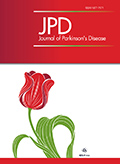Authors: Hsu, Tien-Wei | Chu, Che-Sheng | Tsai, Shih-Jen | Cheng, Chih-Ming | Su, Tung-Ping | Chen, Tzeng-Ji | Bai, Ya-Mei | Liang, Chih-Sung | Chen, Mu-Hong
Article Type:
Research Article
Abstract:
Background: Increasing evidence suggests a potential relationship between viral infection and Parkinson’s disease (PD). Objective: Herein, we explore the association between infection by dengue virus and PD. Methods: Between 1997 and 2012, we recruited 1,422 patients with dengue fever and 14,220 matched controls (age, sex, time of enrollment, and medical and mental comorbidities) from the Taiwan National Health Insurance Research Database. We identified new onset of PD to the end of 2013. The Kaplan-Meier method was used to estimate the incidence rate of PD. Cox-regression analysis was applied to calculate the hazard ratios (HRs) with 95%
…confidence intervals (CIs) after adjustment for confounders. Results: During the follow up period, the dengue group had higher incidence of PD than the control group (1.2% vs. 0.4% , p = 0.001). Patients with dengue fever had a significantly higher risk of developing PD [HR, 2.59; 95% CI, 1.51–4.44] compared with the controls, after adjustments for demographic data, PD-related comorbidities, and all-cause clinical visits. The subgroup analysis, stratified by age and sex, found that higher risk for PD was statistically significant for male (HR, 3.51; 95% CI, 1.76–7.00) and patients aged >60 years (HR, 2.96; 95% CI, 1.62–5.41). Conclusion: The risk of PD was 2.59-fold higher in patients with dengue fever than in non-infected controls during the follow-up period. Clinicians need to monitor signs of PD during patient recovery from dengue fever. Additional studies are needed to confirm our results and investigate the mechanisms linking PD and dengue virus infection.
Show more
Keywords: Dengue, Parkinson’s disease, virus infection, neurological sequelae, Taiwan
DOI: 10.3233/JPD-212938
Citation: Journal of Parkinson's Disease,
vol. 12, no. 2, pp. 679-687, 2022
Price: EUR 27.50






